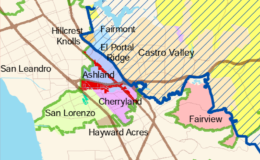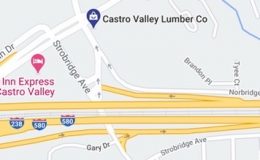Why have all the posts been removed?
What is the Castro Valley Municipal Advisory Council (MAC), Anyway?
- By : Michael Baldwin
- Category : Governance, Local Control
What is the Castro Valley Municipal Advisory Council (MAC)?
Many locals have been mystified about this group. Rumors abound as to their powers, motives, and how they come to power. What’s the real truth?
But first, what exactly IS a Municipal Advisory Council (MAC)?
The State Legislature passed a law in 1971 that allowed California counties to establish Municipal Advisory Councils for unincorporated communities. MACs were created to give a new level of self-governance to unincorporated communities and provide county governments with a better understanding of community needs and wants. County governments find it very difficult to offer unincorporated areas the same levels of services that cities receive. Incorporation would naturally solve that problem, but in many areas incorporation is either not wanted or not feasible.
MACs are defined in California State Code Section 31010:
“The board of supervisors of any county may by resolution
establish and provide funds for the operation of a municipal advisory
council for any unincorporated area in the county to advise the
board on such matters which relate to that area as may be designated
by the board concerning services which are or may be provided to the
area by the county or other local governmental agencies, including
but not limited to advice on matters of public health, safety,
welfare, public works, and planning. Unless the board of supervisors
specifically provides to the contrary, a municipal advisory council
may represent the community to any state, county, city, special
district or school district, agency or commission, or any other
organization on any matter concerning the community. The board may
pay from available funds such actual and necessary expenses of
travel, lodging, and meals for the members of the council while on
such official business as may be approved by the board.”
This state law allows Counties to create MACs which vary widely in their scopes and structures. The county Board of Supervisors is authorized under 31010 to decide if a MAC will be appointed or elected. Although originally intended as a preliminary step towards incorporation (as happened in East Palo Alto, Windsor, Apple Valley and Hesperia among others) they have evolved more into permanent tools for community participation in unincorporated communities.

Alameda County Board of Supervisors resolution on April 7, 1981 established the Castro Valley MAC.
The original resolution states that the MAC is to “advise the Board of Supervisors on matters concerning the government by said Board of that area known as Castro Valley.” It goes on to state “Such advice to the Board of Supervisors shall be on all matters concerning services which are or may be provided to said area by the County or other local governmental agencies, including but not limited to advice on matters of public safety, welfare, public works and planning.”
Originally, the five members were appointed to one year terms appointed by the District Four Supervisor. That has been amended over the years, most recently in 2010, and now there are seven members who are appointed to four year terms, not to exceed twelve years of consecutive service (which is the term limit for all Alameda County Boards and Commissions.) Members must be residents of Castro Valley or be an “active” Castro Valley business owner, and continue to be for the duration of their term.
Currently, the council has two Land Use meetings on the second and fourth Monday of each month, and a General Purpose meeting on the third Monday of the Month. Land use meetings generally deal with planning and zoning issues, while General Purpose deal with other issues. Council Members receive a $50 per diem payment for every meeting, and the Council is limited to no more than 30 meetings per year. Members receive no other compensation or benefits for their work.
At land use meetings, the MAC reviews conditional use permits, zoning exceptions that allow property owners to use land in a way not otherwise permitted within a particular area, and forwards its recommendations to the West County Board of Zoning Adjustments (BZA), who makes the final decision. The BZA also reviews site development plans and many other land use and zoning issues, considering input from the MAC.
At general purpose meetings, the MAC considers many other local issues, many at the direct request of District 4 Supervisor Nate Miley.
It is important to note that the Castro Valley MAC has no binding powers at all. Legally, it functions purely in an advisory capacity. The MAC makes recommendations to the Board of Supervisors and other County agencies, but they are under no obligation to accept its advice, and often do not.
The Castro Valley MAC is not a particularly mysterious group, but they have been misunderstood by many. They have a very important role in our virtual town, and they act as the collective voice of Castro Valley to Nate Miley, and the rest of the elected County government. Their opinions and recommendations are seriously considered when decisions about us are made.
Try to make it to a MAC meeting, and learn about how local governance works in Castro Valley.
If you can’t make it to MAC meetings, you can often follow them live on Twitter with #MACmtg hashtag, or catch a recap of MAC meetings here on the Castro Valley Matters blog.



